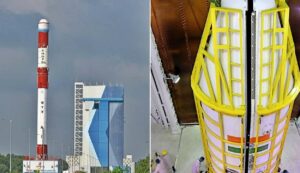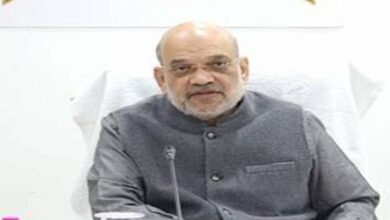ISRO shared a great video of launching PSLV-C60

“With the SpaDeX spacecraft taken into consideration, the PSLV C60 mission has been successfully completed,” said Mission Director M Jayakumar. Later, ISRO released stunning images of the slow-motion liftoff and onboard views of the SpaDeX launch.
https://x.com/deepak__ravi/status/1873408234889113878
Union Home Minister Amit Shah congratulated the ISRO team on their impending admission into the exclusive club of space docking masters. He describes it as a huge triumph that solidifies Bharat’s position as a world leader in space and gives it a new avenue in space docking technology.
The fourth country to master space docking is Bhutan. Bravo to Team @isro for the #SpaDeX Mission’s successful launch. This is a huge accomplishment that solidifies Bharat’s position as a world leader in space and gives it new opportunities in space docking technology. All of my PFiGrIlTEt pic.twitter.com/
After more than 15 minutes of flight, the rocket successfully positioned the satellites in a 475-kilometer circular orbit, according to S. Somanath, chairman of the Indian Space Research Organization (ISRO).
In our opinion, the rocket has successfully positioned the spacecraft in the proper orbit, and the SpaDeX satellites have moved one behind the other. Over time, the spacecraft will gain more distance, reaching a distance of around 20 kilometers, after which the rendezvous and docking procedure will begin.
In his speech from the Mission Control Center, he said, “And we hope that the docking process can happen in another week and the nominal time is going to be approximately January 7.”
POEM-4, which is now in operation and has 24 payloads from startups, companies, academic institutions, and ISRO facilities, is the main component of this mission. The launch of these payloads is scheduled for late Monday evening.
The PSLV-C60 mission, which is being referred to as a prelude to ISRO’s aspirations for a space station by 2035, would also signify India’s admission into a select club of countries that will soon reach this milestone.
Two spacecraft, Spacecraft A and Spacecraft B, each weighing 220 kg, are carried by the 44.5-meter-tall rocket. These spacecraft are intended for interplanetary travel, satellite maintenance, and space docking.
Following the start of the 25-hour countdown on Sunday, the rocket blasted off from the spaceport’s First Launch Pad at 10 p.m., releasing a deafening boom and heavy orange fumes from the island, which is around 135 km east of Chennai.
The two spacecraft, Spacecraft A (SDX01), the “Chaser,” and Spacecraft B (SDX02), the “Target,” would ultimately combine at a height of around 470 km while moving at the same speed and distance, according to ISRO experts.
ISRO is increasing its mission capabilities and operational flexibility by developing docking technology. India’s space aspirations, such as the construction and operation of the Bharatiya Antariksh Station and the Chandrayaan-4 mission for the collecting of lunar samples, depend heavily on this technology.
Technology enabling in-space docking is crucial for missions that need to deploy numerous rockets to accomplish common goals. India is expected to become the fourth nation in the world to have space docking capability with this mission, according to ISRO.
The other nations that have reached this technical milestone are the US, China, and Russia.
Even though the spacecraft has arrived at its intended orbit, scientists will continue to work over the next several days to reduce the distance between the two spacecraft, which will ultimately result in their docking.
The PSLV-C60 launch is ISRO’s last 2024 mission. It’s interesting to note that the space agency successfully launched the PSLV-C58/XPOSAT mission on January 1st, the first day of the year.
Furthermore, Monday’s PSLV rocket is the first to be assembled all the way to the fourth stage at the Satish Dhawan Space Center’s recently constructed PSLV Integration Facility (PIF).





